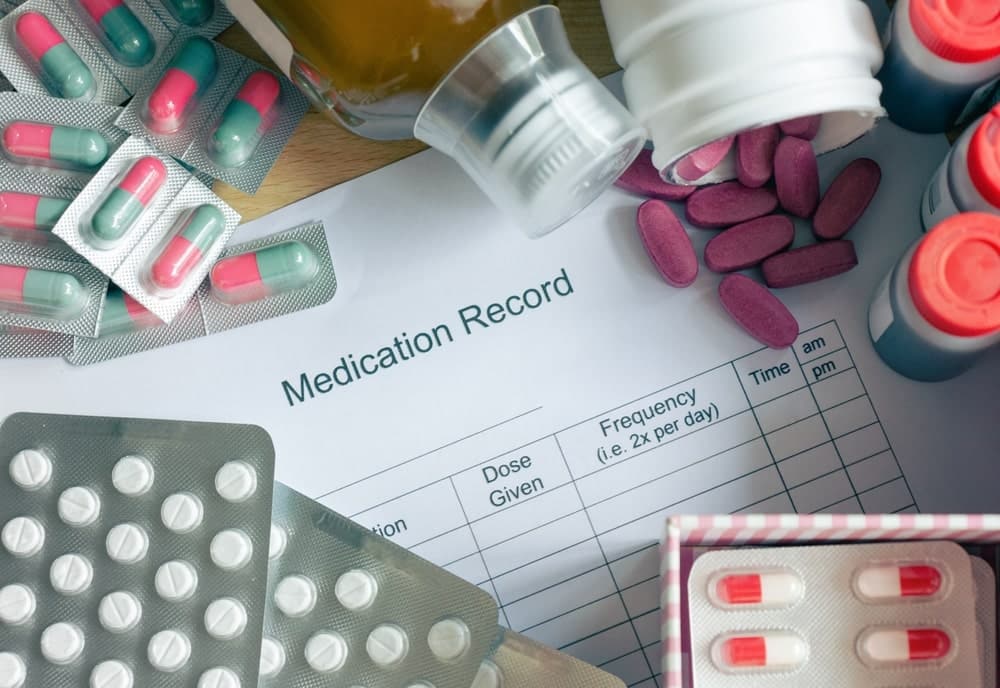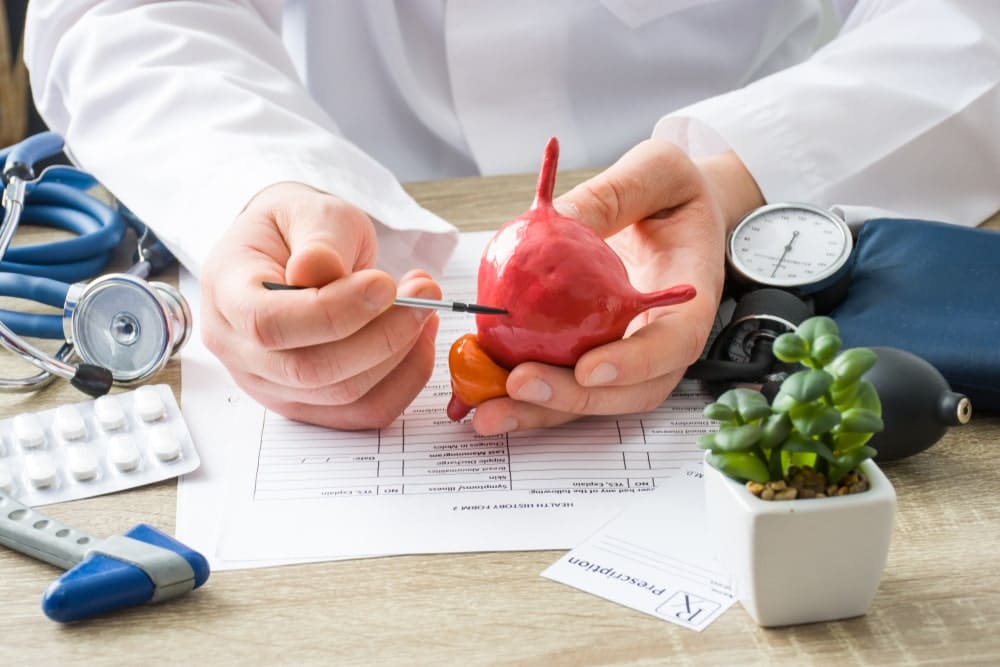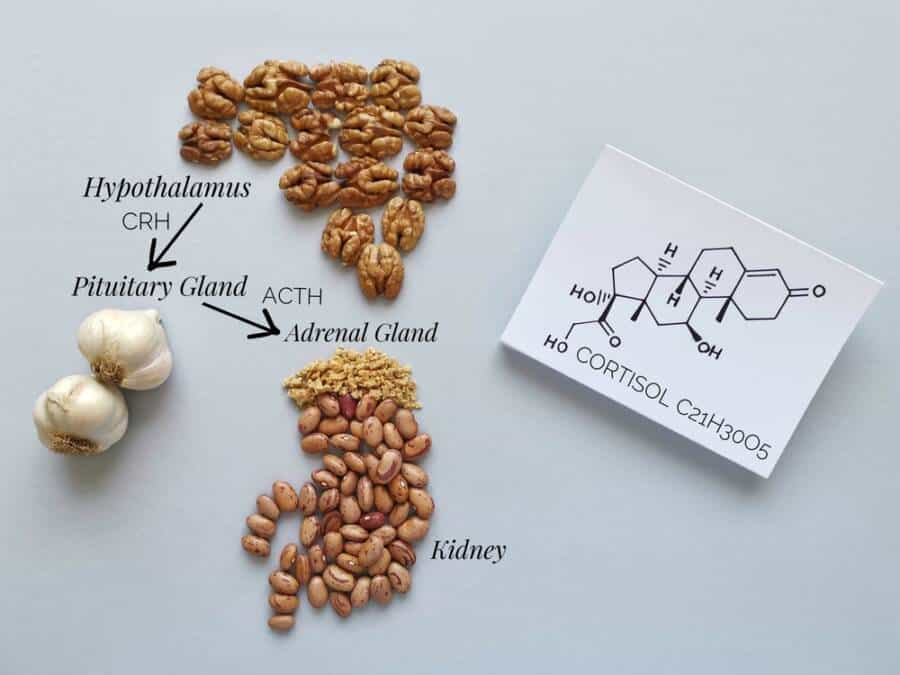Did you know about these bladder cancer risk factors?
Have you ever wondered about the factors that could potentially increase your risk of developing bladder cancer? Just like any other form of cancer, it’s a serious health matter that demands awareness and attention.
That’s why Indulging Health is delving into the world of bladder cancer risk factors. No matter your age, understanding these risks is vital for maintaining your health and overall well-being.
Bladder cancer risk factors are frequently underestimated, but they play a major role in determining a person’s exposure to this disease. From environmental factors to lifestyle choices, countless elements can influence your likelihood of developing bladder cancer.
By being aware of these 12 scary bladder cancer risk factors, you’ll empower yourself with knowledge so you can take proactive steps toward reducing your risks.
…Let’s dive in and explore these factors together to ensure a healthier tomorrow!

Bladder cancer risk factor: Medications
There are specific drugs that have been linked to bladder cancer. The US Food and Drug Administration cautions that taking the diabetes medication pioglitazone, also known as Actos, for longer than a year may increase an individual’s risk of developing this type of cancer.
And studies have shown no association between the use of the medicine and bladder cancer. Cancer treatments, including the chemotherapy drug cyclophosphamide, also known as Cytoxan or Neosar, or radiation therapy, may also increase the risk of bladder cancer.
We recommend speaking with your doctor if you have any worries about the medications you’re taking.
Bladder cancer risk factor: Chronic bladder infections and irritation
Urinary infections, bladder catheters left in place too long, kidney and bladder stones, and other causes of chronic bladder irritation have been connected to bladder cancer, particularly squamous cell carcinoma of the bladder. But the reason is not apparent.
Schistosomiasis, also known as bilharziasis, is an infection with a parasitic worm that can sneak its way into the bladder, and is also a big risk factor to consider.
In countries where this parasite is common, mainly in the Middle East and Africa, squamous cell cancers of the bladder are much more ordinary. In the US, it’s considered an irregular cause of bladder cancer.
Bladder cancer risk factor: Smoking
Individuals who smoke are at least three times as likely to get bladder cancer as those who never have. Smoking can be blamed for about half of all bladder cancer in both women and men. Studies have even shown that it’s the most common risk factor for this type of cancer.
When you smoke, toxic chemicals can build up in the urine and harm the lining of your bladder. This is what could lead to cancer. Avoid all cigars, cigarettes, and pipes to lower your risk of developing bladder cancer.
Bladder cancer risk factor: Race
Caucasian individuals are about twice as likely to develop bladder cancer as Hispanics or African Americans. American Indians and Asian Americans have slightly lower rates of this type of cancer. The reasons for these differences are not yet well understood.
Bladder cancer risk factor: Supplements
Dietary supplements that contain aristolochic acid might put you at a higher risk of getting bladder cancer. This compound is often found in herbal items to help:
-Inflammation
-Weight loss
-Arthritis
-Gout
Try to avoid supplements that contain aristolochic acid to lower your risk.
Bladder cancer risk factor: Gender
The reality is that bladder cancer affects more men than it does women. In fact, men are about three to four times more likely to get this kind of cancer throughout their lifetime.

Bladder cancer risk factor: Arsenic in water
Quite a few studies have suggested that consuming high amounts of arsenic in our drinking water is connected to a more significant risk of bladder cancer.
Researchers aren’t precisely sure why being exposed to this element is related to cancer. However, most of the drinking water in the US contains low levels of arsenic. This may also be a concern for people in other parts of the world.
Bladder cancer risk factor: Age
Most cases of bladder cancer transpire in older people. Roughly 9 out of 10 individuals with this type of cancer are older than 55 years. The average age that most develop bladder cancer seems to be 73.
Bladder cancer risk factor: Dehydration
Not getting enough fluids might end up being a silent risk factor for bladder cancer. Researchers think that individuals drinking plenty of water daily are draining their bladders more frequently, which can keep harmful chemicals from sticking around in the bladder.
While guidelines differ, men should be drinking approximately 13 cups of liquids daily. For women, it’s around 9 cups a day. How much water do YOU drink daily?
Bladder cancer risk factor: Bladder congenital disabilities
Before we’re even born, there’s already a connection between the belly button and our bladder. It’s called the urachus. If part of this association remains after birth, it could turn into cancer later in life.
Cancers that form in the urachus are typically adenocarcinomas, made up of cancerous gland cells. About a third of the adenocarcinomas of the bladder start here. But this is something that’s very rare, accounting for less than half of 1% of all cancers.
Another rare congenital disability called exstrophy dramatically raises a person’s risk of this type of cancer. In bladder exstrophy, the bladder and the abdominal wall in front of it don’t close entirely during fetal development and are merged.
This leaves the inner lining of a person’s bladder exposed outside the body. Surgery soon after birth can repair the bladder and abdominal wall and any other related defects.
However, individuals who have this still have a more increased risk for urinary infections and bladder cancer.
Bladder cancer risk factor: Workplace chemicals
Certain chemicals used in the workplace have been linked with a higher chance of developing bladder cancer. Research estimates that occupational exposure to chemical agents is responsible for 18% of bladder cancer cases.
Physicians believe that contact with certain agents leads to this type of cancer because your kidneys assist in filtering harmful chemicals from your bloodstream and distributing them into your bladder.
Substances used in manufacturing rubber, leather, dyes, and paint products are believed to affect your risk of bladder cancer. Some of these chemicals include beta-naphthylamine and benzidine, known as aromatic amines.
Because people in some professions are exposed to harmful chemicals regularly, according to the CDC, you’re at an increased risk for cancer if you work in the following professions:
-Truck driver
-Hairdresser
-Painter
-Machinist
Bladder cancer risk factor: Family history of particular conditions
If you have a family history of bladder cancer or the genetic condition of nonpolyposis colorectal cancer, also known as “Lynch syndrome,” you could be at an advanced risk for bladder cancer.
Specific mutations, like those of the RB1 and PTEN genes, might also boost your chances of having this type of cancer.

How is bladder cancer diagnosed?
Your physician can diagnose bladder cancer by performing the following tests:
Biopsy: During a cystoscopy, a medic might collect a little sample of tissue for testing. This procedure is known as a biopsy.
Cystoscopy: This involves inserting a tiny, narrow tube, called a cystoscope, through your urethra. The instrument has a lens that lets professionals see inside your bladder for signs of cancer.
Imaging tests: Various imaging tests, such as a CT urogram, ultrasound, retrograde pyelogram, or MRI scan, can be performed to let your doctor see specific areas in your urinary tract.
Urinalysis: This straightforward test detects blood and other substances in your urine.
Urine cytology: This procedure examines a small urine sample to check for cancer cells under a microscope.
We hope you found this article informative. Be sure to leave us a comment= to share your thoughts with us. And if you liked this post, check out: 8 Shocking Reasons Why Men Die Earlier Than Women…It’s Not What You Think!













